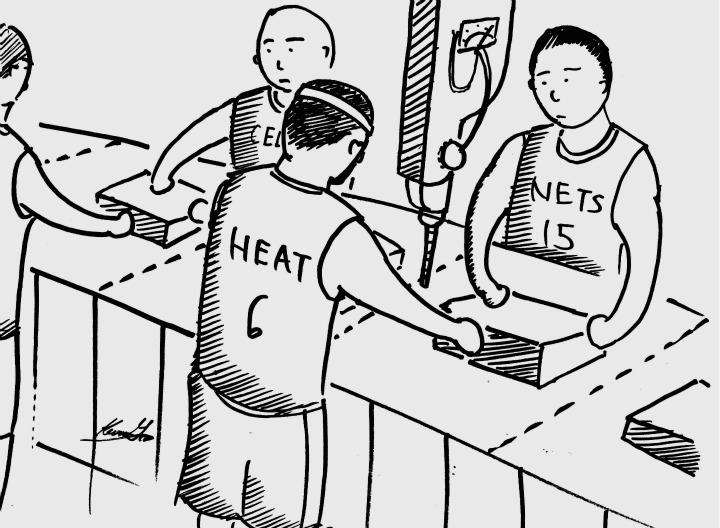A breakdown of why the NBA lockout went well
December 11, 2011

The NBA lockout is over. You know what that means: the Lakers are going to win another one.
On Nov. 26, the players and the owners agreed on a tentative collective bargaining agreement. For all intents and purposes, the owners righteously won, as the basketball related income (BRI) of the players dropped from 57% to 51.15% for the 2011-2012 season. Although it did not drop to the owner’s desired amount of 47%, this is still considered a victory for the owners, a good thing considering the logistics of the situation.
For those of you that don’t that may not understand these statistics, compare it to this. The owners of a factory and its workers are unable to complete a new labor deal. Because of this, the owners no longer allow the workers into the factory. Eventually, the two sides mediate a new deal that makes some concessions to the workers, but is mostly in the owners favor.
Now if we also compare the rest of the NBA’s situation situation to what you may have learned in history class about strikes during the industrial revolution, the players would represent the wronged workers and the owners would represent the greedy business tycoons. There are, however, a few discrepancies.
Contrary to the business tycoons of the early 1900’s, the owners are losing money. The reason why the owners asked the players to take a paycut is not because they wanted to line their bathtubs with more 100 carat diamonds, but because they were not even achieving the seemingly simple goal of breaking even. Their business was not profitable. The league claimed it was losing $300 million a year, and clearly something had to give.
Also, the players are not dirt poor, underpaid workers. Back in the industrial age, workers lived day by day, with barely enough to support their families. A paycut would mean less food on the table. The average salary of an NBA player, however is $4.8 million a year. The players should be able to accept a slightly smaller salary without any problems. If the owners were asking the players to take a 50% cut, then yes, there would be an issue, but the cut the owners are asking for is not that deep. The players should be glad to give a little more to the organization that enables their dreams in the first place.
Furthermore, the players are playing a game they love, not being worked to the bone. During the industrial age, people worked on dangerous machines for hours on end, doing the same monotonous, physically taxing tasks over and over again. Although the players are also working hard, they get to follow their passion, to do what they’ve always wanted to do since they were five and first saw a game on TV. In fact, they should be happy with any halfway decent deal they get as long they make their living on the basketball court and not in a factory. What fueled the players during the lockout was pure greed. That’s not to say that the owners were saints, but in this situation, the players were much less justified.
Regardless of who was in the right, we can now all focus on the more pressing matter at hand: whether the Lakers are going to merely dominate the 2011-2012 season or are going to completely crush the competition.



























